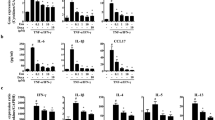Abstract
Licochalcone A (LicA), a major phenolic constituent of the licorice species Glycyrrhiza inflata, has recently been reported to have anti-inflammatory as well as anti-microbial effects. These anti-inflammatory properties might be exploited for topical applications of LicA. We conducted prospective randomized vehicle-controlled clinical trials to assess the anti-irritative efficacy of cosmetic formulations containing LicA in a post-shaving skin irritation model and on UV-induced erythema formation. The clinical trials were accompanied by a series of in vitro experiments to characterize anti-inflammatory properties of LicA on several dermatologically relevant cell types. Topical LicA causes a highly significant reduction in erythema relative to the vehicle control in both the shave- and UV-induced erythema tests, demonstrating the anti-irritative properties of LicA. Furthermore, LicA is a potent inhibitor of pro-inflammatory in vitro responses, including N-formyl-MET-LEU-PHE (fMLP)- or zymosan-induced oxidative burst of granulocytes, UVB-induced PGE2 release by keratinocytes, lipopolysaccharide (LPS)-induced PGE2 release by adult dermal fibroblasts, fMLP-induced LTB4 release by granulocytes, and LPS-induced IL-6/TNF-α secretion by monocyte-derived dendritic cells. The reported data suggest therapeutic skin care benefits from LicA when applied to sensitive or irritated skin.







Similar content being viewed by others
Abbreviations
- fMLP:
-
N-formyl-MET-LEU-PHE
- iDC:
-
Immature dendritic cell
- LicA:
-
Licochalcone A
- LPS:
-
lipopolysaccharide
- MTT:
-
3-[4,5-Dimethylthiazol-2-yl]-2,5-diphenyltetrazolium bromide
References
Armanini D, Fiore C, Mattarello MJ, Bielenberg J, Palermo M (2002) History of the endocrine effects of licorice. Exp Clin Endocrinol Diabetes 110:257–261
Barfod L, Kemp K, Hansen M, Kharazmi A (2002) Chalcones from chinese liquorice inhibit proliferation of T cells and production of cytokines. Int Immunopharmacol 2:545–555
Chen M, Christensen SB, Blom J, Lemmich E, Nadelmann L, Fich K, Theander TG, Kharazmi A (1993) Licochalcone A, a novel antiparasitic agent with potent activity against human pathogenic protozoan species of Leishmania. Antimicrob Agents Chemother 37:2550–2556
Chen M, Theander TG, Christensen SB, Hviid L, Zhai L, Kharazmi A (1994) Licochalcone A, a new antimalarial agent, inhibits in vitro growth of the human malaria parasite Plasmodium falciparum and protects mice from P. yoelii infection. Antimicrob Agents Chemother 38:1470–1475
Chen M, Zhai L, Christensen SB, Theander TG, Kharazmi A (2001) Inhibition of fumarate reductase in Leishmania major and L. donovani by chalcones. Antimicrob Agents Chemother 45:2023–2029
Friis-Moller A, Chen M, Fuursted K, Christensen SB, Kharazmi A (2002) In vitro antimycobacterial and antilegionella activity of licochalcone A from chinese licorice roots. Planta Med 68:416–419
Fu Y, Hsieh TC, Guo J, Kunicki J, Lee MY, Darzynkiewicz Z, Wu JM (2004) Licochalcone-A, a novel flavonoid isolated from licorice root (Glycyrrhiza glabra), causes G2 and late-G1 arrests in androgen-independent PC-3 prostate cancer cells. Biochem Biophys Res Commun 322:263–270
Fukai T, Marumo A, Kaitou K, Kanda T, Terada S, Nomura T (2002) Anti-Helicobacter pylori flavonoids from licorice extract. Life Sci 71:1449–1463
Haraguchi H, Tanimoto K, Tamura Y, Mizutani K, Kinoshita T (1998) Mode of antibacterial action of retrochalcones from Glycyrrhiza inflata. Phytochemistry 48:125–129
Hayashi H, Hosono N, Kondo M, Hiraoka N, Ikeshiro Y, Shibano M, Kusano G, Yamamoto H, Tanaka T, Inoue K (2000) Phylogenetic relationship of six Glycyrrhiza species based on rbcL sequences and chemical constituents. Biol Pharm Bull 23:602–606
Le Y, Murphy PM, Wang JM (2002) Formyl-peptide receptors revisited. Trends Immunol 23:541–548
Nielsen SF, Boesen T, Larsen M, Schonning K, Kromann H (2004) Antibacterial chalcones–bioisosteric replacement of the 4′-hydroxy group. Bioorg Med Chem 12:3047–3054
Shibata S (2000) A drug over the millennia: pharmacognosy, chemistry, and pharmacology of licorice. Yakugaku Zasshi 120:849–862
Shibata S, Inoue H, Iwata S, Ma RD, Yu LJ, Ueyama H, Takayasu J, Hasegawa T, Tokuda H, Nishino A et al (1991) Inhibitory effects of licochalcone A isolated from Glycyrrhiza inflata root on inflammatory ear edema and tumour promotion in mice. Planta Med 57:221–224
Tsukiyama R, Katsura H, Tokuriki N, Kobayashi M (2002) Antibacterial activity of licochalcone A against spore-forming bacteria. Antimicrob Agents Chemother 46:1226–1230
Wang ZY, Nixon DW (2001) Licorice and cancer. Nutr Cancer 39:1–11
Weber T, Schoelermann A, Buerger A, Rizer R (2005) Tolerance and efficacy of a skin care regimen containing licochalcone A with erythematous rosacea and facial redness. J Am Acad Dermatol 52:95
Yang RB, Mark MR, Gurney AL, Godowski PJ (1999) Signaling events induced by lipopolysaccharide-activated toll-like receptor 2. J Immunol 163:639–643
Ziegler HL, Hansen HS, Staerk D, Christensen SB, Hagerstrand H, Jaroszewski JW (2004) The antiparasitic compound licochalcone a is a potent echinocytogenic agent that modifies the erythrocyte membrane in the concentration range where antiplasmodial activity is observed. Antimicrob Agents Chemother 48:4067–4071
Author information
Authors and Affiliations
Corresponding author
Rights and permissions
About this article
Cite this article
Kolbe, L., Immeyer, J., Batzer, J. et al. Anti-inflammatory efficacy of Licochalcone A: correlation of clinical potency and in vitro effects. Arch Dermatol Res 298, 23–30 (2006). https://doi.org/10.1007/s00403-006-0654-4
Received:
Revised:
Accepted:
Published:
Issue Date:
DOI: https://doi.org/10.1007/s00403-006-0654-4




